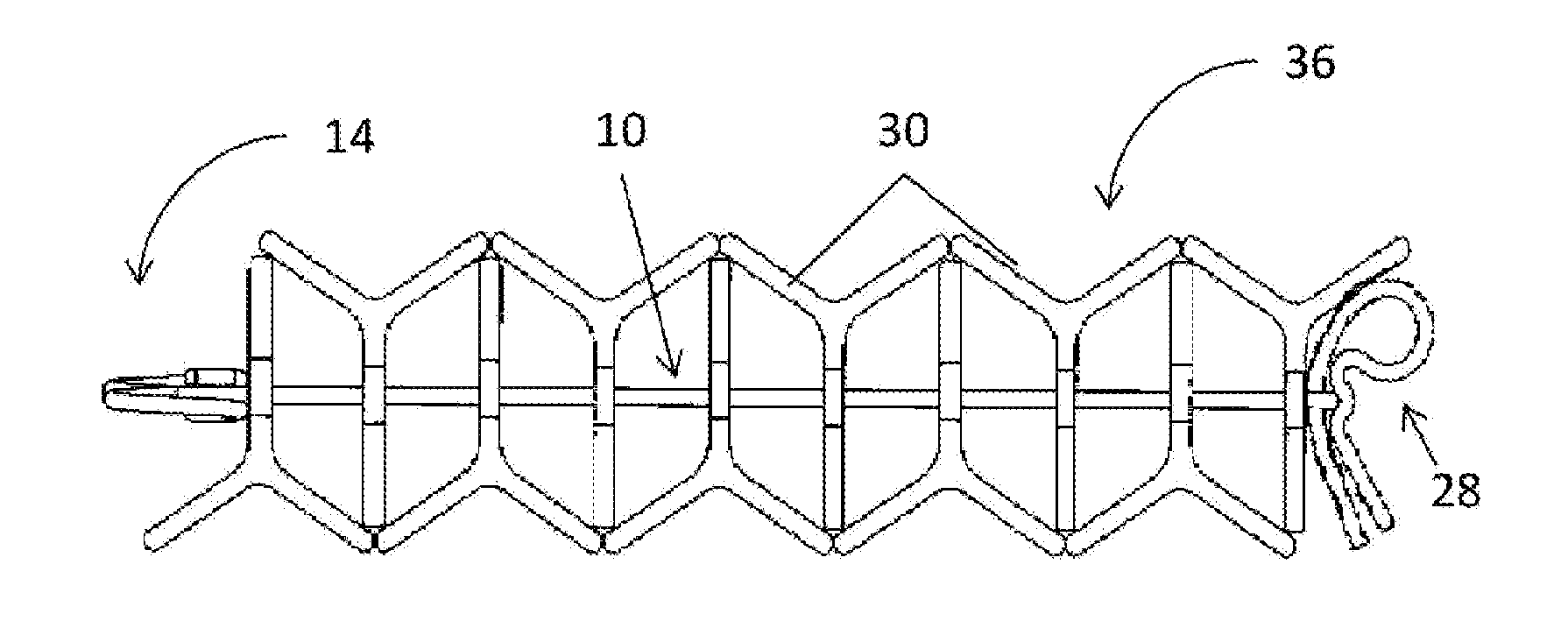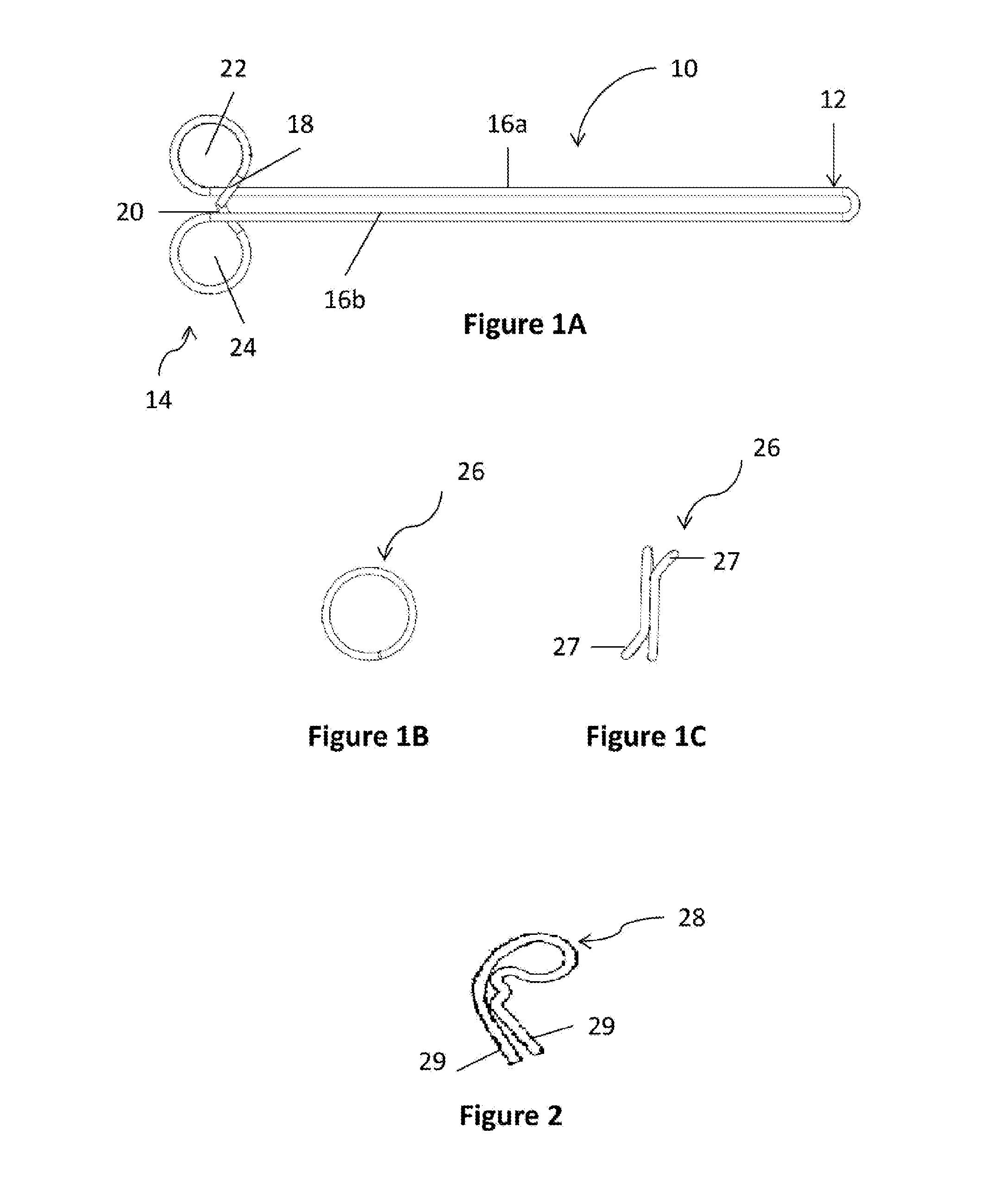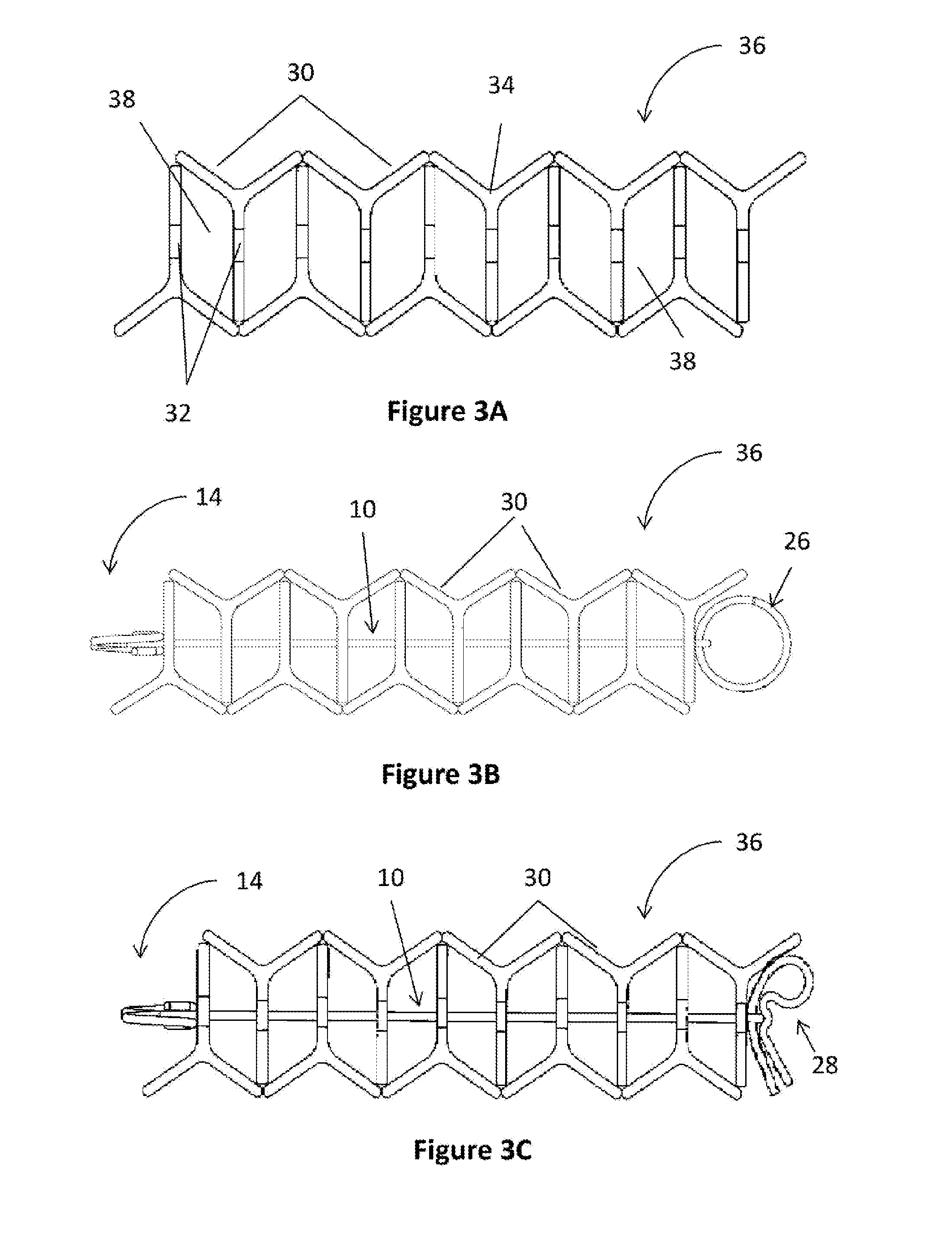Device for securing posts together
a technology for securing posts and bundles, applied in the direction of package recycling, rod connections, packaging goods types, etc., can solve the problems of difficult storage and transportation, difficult stacking of bundles for storage or transportation, and difficulty in unpacking bundles, etc., to achieve tighter packing density, simplify storage and transportation of post bundles, and increase the effect of packing density
- Summary
- Abstract
- Description
- Claims
- Application Information
AI Technical Summary
Benefits of technology
Problems solved by technology
Method used
Image
Examples
example 1
[0108]A small bundle of ten Y-posts was made, that was to be used in the creation of a larger stack of posts for storage or transport, using ten Y-posts together with two spikes 10 and two split rings 26. Each of the posts had seven apertures, in the form of elongate slots, in their stalks.
[0109]Five Y-posts 30 were positioned on a bench so that the pointed ends were all at the same end, the wings were located on the bench, and so that an edge of one of the wings (i.e. one of the minor flanges) touched the edge of a wing of an adjacent post. This positioned the first five Y-posts so that their stalks extended perpendicularly to the bench, and approximately parallel to each other stalk.
[0110]Four Y-posts were then arranged such that, with their pointed ends at the same end of the bench as the already positioned Y-posts, a distal longitudinal edge of their stalks were positioned on the joint formed between the wings of adjacent posts. In this regard, the profile of these four Y-posts ...
example 2
[0114]A bundle of ten Y-posts were to be transported in the back of a vehicle for use in mending a fence line having a number of broken posts. A handle 500 was employed to move the bundle formed in Example 1.
[0115]The foot 508 and leg 504, and the foot 510 and leg 506, of the handle 500 were inserted into the space / cavity 38 formed between the first and second adjacent posts and the ninth and tenth adjacent posts, respectively, in the bundle, by holding the gripping portion 502 of the handle and aligning the legs 504, 506 with the cavities.
[0116]The feet 508, 510 and legs 504, 506 were then inserted into the respective cavities. The feet 508, 510 contacted the elongate portion 16 of the spike 10, which caused the feet 508, 510 to deflect at ankles 512, 514 and be urged towards the legs 504, 506. As the legs 504, 506 continued to be inserted into the cavities, the feet 508, 510 continued to be deflected towards the legs 504, 506 until they had passed the elongate portion 16 of spike ...
example 3
[0121]One thousand six hundred posts were to be stored for future sale as bundles of twenty posts. Each of the posts had eleven apertures, in the form of elongate slots, in their stalks. Three spikes 210, as shown in FIG. 5, were used to secure each bundle of twenty posts, and a handle 700, as shown in FIG. 10, was also used to allow the bundles to be easily moved.
[0122]The twenty posts were aligned in similar manner to the ten posts described in Example 1, with the profile of each post being inverted with respect to its adjacent post.
[0123]The first end 212 of a first spike 210 was inserted through aligned apertures at one end of the posts. As the first end 212 passed through an aperture, end 220 of the hooked leg portion 218 contacted an edge of the aperture causing the hooked leg portion 218 to deflect towards the elongate portion 216, allowing it to pass through the aperture. Once it had passed through the aperture, the hooked leg portion 218 is angled such that its end 220 enga...
PUM
 Login to View More
Login to View More Abstract
Description
Claims
Application Information
 Login to View More
Login to View More - R&D
- Intellectual Property
- Life Sciences
- Materials
- Tech Scout
- Unparalleled Data Quality
- Higher Quality Content
- 60% Fewer Hallucinations
Browse by: Latest US Patents, China's latest patents, Technical Efficacy Thesaurus, Application Domain, Technology Topic, Popular Technical Reports.
© 2025 PatSnap. All rights reserved.Legal|Privacy policy|Modern Slavery Act Transparency Statement|Sitemap|About US| Contact US: help@patsnap.com



